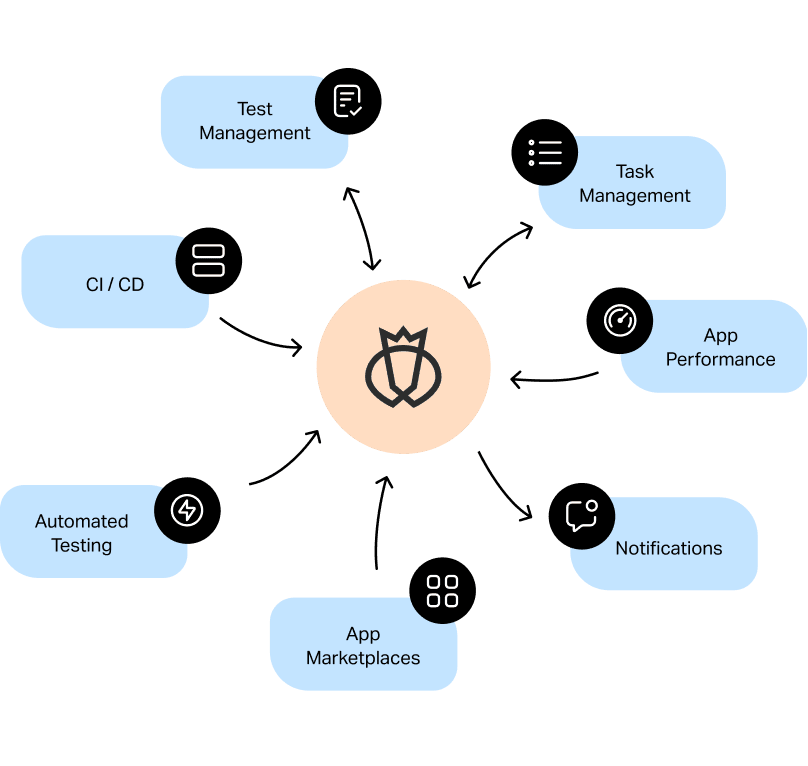Automation Testing: Trick Steps to Enhance Growth Lifecycles
Automation Testing: Trick Steps to Enhance Growth Lifecycles
Blog Article
From Manual to Automated Screening: A Comprehensive Guide to Transitioning Smoothly and Efficiently
In the realm of software application screening, the change from manual to automated processes has come to be an increasingly important change for organizations seeking to boost efficiency and accuracy in their screening practices. The journey from handbook to automated screening is not without its difficulties, but when come close to tactically and with a clear plan in mind, the advantages can be substantial.
Advantages of Automated Testing
Automated testing provides many advantages, boosting effectiveness and accuracy in software advancement procedures. One main benefit is the substantial reduction in testing time. Automated tests can be run simultaneously on numerous devices and operating systems, substantially quickening the screening stage contrasted to hand-operated testing. This increased efficiency permits faster responses on the top quality of the software, allowing developers to identify and resolve problems promptly.
Moreover, automated testing guarantees a greater degree of accuracy in identifying defects. Consistency in screening is also enhanced, as automated examinations execute the exact same actions exactly each time they are run.
Picking the Right Tools

Firstly, assess your objectives and demands. Comprehend the extent of your job, the modern technologies entailed, and the capability of your team. This evaluation will assist you establish the capabilities and features you require in your testing devices.
Secondly, take into consideration the compatibility of the devices with your existing systems and processes. Seamless assimilation with your existing software program development lifecycle is vital to make sure a smooth transition to automation.
In addition, assess the scalability and adaptability of the tools. As your testing requires develop, the devices ought to be able to adjust and fit modifications properly.
Last but not least, consider the support and neighborhood around the devices. Robust support and an active user area can provide valuable sources and support when implementing automated screening. By carefully considering these aspects, you can choose the right tools that straighten with your requirements and established the stage for an effective change to automated screening.
Writing Effective Examination Manuscripts
When crafting test manuscripts, it is necessary to take into consideration the details needs of the software being evaluated and ensure that the scripts attend to all vital functionalities. Clear and descriptive calling conventions for examination manuscripts and test cases can improve readability and maintainability. Additionally, including error handling systems within the test manuscripts can help in identifying and addressing problems without delay.
Moreover, arranging examination manuscripts right into modular parts can improve reusability and scalability, minimizing redundancy and boosting effectiveness in test script maintenance. Regular testimonials and updates to examine manuscripts are critical to equal developing software demands and functionalities. By following these concepts, testers can create robust and effective examination manuscripts that add substantially article to the success of automated screening procedures.
Integrating Automation Into Workflows
By perfectly incorporating automated screening tools like Selenium or Appium right into the software application development lifecycle, groups can achieve faster responses on code adjustments, leading to quicker bug detection and resolution. This combination permits for continual testing throughout the growth process, ensuring that any problems are determined early on, resulting in higher software program top quality. Proper combination of automation tools calls for collaboration in between growth, testing, and operations teams to establish a unified process that optimizes efficiency and effectiveness in supplying high-quality software application products.
Guaranteeing a Smooth Change
Effectively transitioning to automated screening involves precise planning and cautious execution to make the most of and that site minimize interruptions effectiveness in the software development process - automation testing. To make sure a smooth transition, it is necessary to begin by conducting a thorough evaluation of the existing testing processes and determining locations where automation can bring the most substantial benefits. Involving with all stakeholders beforehand at the same time, consisting of developers, testers, and job supervisors, is essential for gathering assistance and buy-in for the automation campaign
Interaction is key throughout this shift phase. Clear interaction of the objectives, benefits, and expectations of automated screening aids to manage any resistance or problems that may develop. Additionally, providing adequate training and sources for employee to upskill in automation tools and strategies is essential for guaranteeing a successful change.

Final Thought
To conclude, transitioning from handbook to automated screening provides countless benefits, consisting of enhanced performance and reliability. By choosing the suitable tools, creating effective test scripts, and integrating automation effortlessly into process, companies can make certain a smooth and effective shift. It is vital to accept automation as a valuable property in software application screening processes to enhance overall quality and productivity.
In the world of software screening, the shift from guidebook to automated procedures has ended up being an increasingly important transition for companies seeking to boost performance and accuracy in their screening practices. Automated examinations can be run all at once on several devices and operating systems, considerably speeding up the testing learn this here now phase compared to hand-operated screening. Uniformity in testing is likewise improved, as automated examinations implement the exact same steps precisely each time they are run.To ensure the effective execution of selected screening devices, the creation of effective test manuscripts plays a vital function in verifying the capability and efficiency of automated processes - automation testing. By complying with these concepts, testers can create reliable and robust examination manuscripts that contribute substantially to the success of automated screening procedures
Report this page